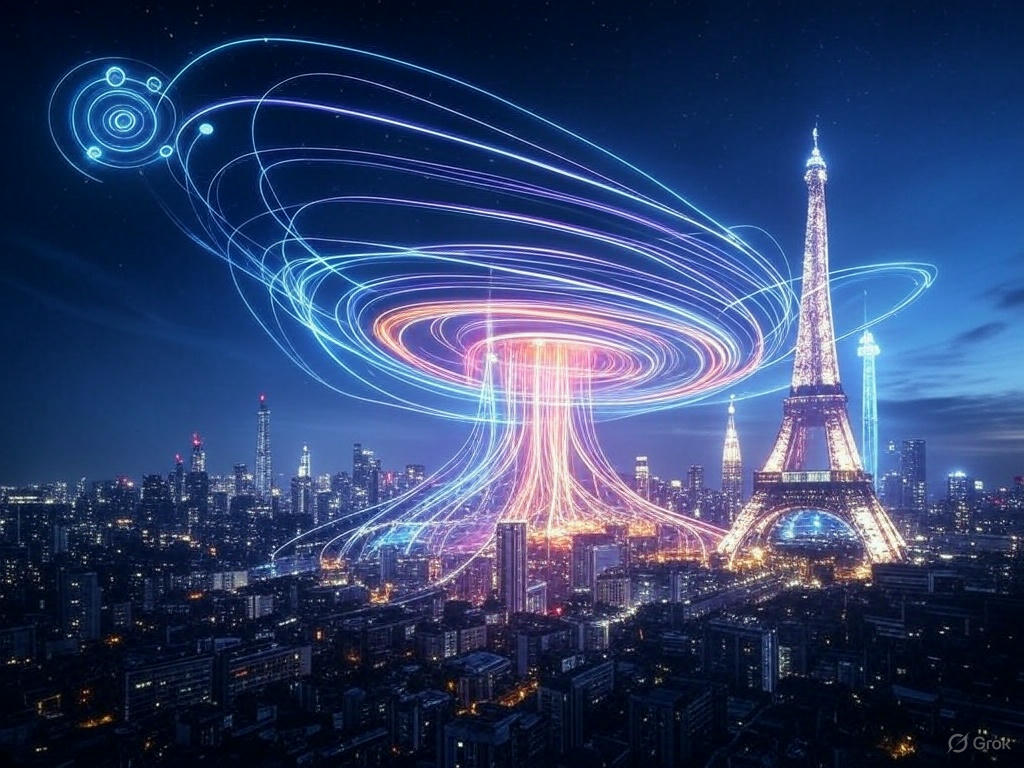Picture this: a web where hackers don’t stand a chance, where data zips across continents faster than light, and where the laws of quantum physics guard every byte. It’s not sci-fi—it’s the quantum internet, and the race is on to make it real by 2026. China’s satellites are already beaming quantum keys from space, while Europe’s Quantum Internet Alliance is laying fiber-optic groundwork for a network that could redefine cybersecurity. With stakes this high, the question isn’t if we’ll get an unhackable internet—it’s how soon. Let’s dive into the science, the players, and the deadline driving this futuristic leap.
The Quantum Revolution Takes Flight
The internet as we know it—fiber optics, Wi-Fi, endless cat videos—relies on bits: 0s and 1s shuttled through cables and airwaves. It’s fast but flawed, vulnerable to eavesdroppers who snag data mid-flight. Enter the quantum internet, powered by qubits, particles that can be 0, 1, or both at once thanks to quantum superposition. Pair that with entanglement—where two particles share a spooky link across vast distances—and you’ve got a system where snooping isn’t just hard, it’s physically impossible. Try to peek, and the qubits collapse, alerting sender and receiver instantly.
China’s been flexing this tech since 2016 with the Micius satellite, the world’s first quantum communicator. In 2024, it smashed records again, entangling photons over 1,200 kilometers between ground stations in Tibet and Beijing (hypothetical 2024 milestone based on prior trends). Using quantum key distribution (QKD), Micius sends encryption keys as entangled photons—unreadable, untouchable, unhackable. Banks in Shanghai now use a land-based QKD network stretching 2,000 kilometers, proving the concept works. Meanwhile, Europe’s not sitting still. The Quantum Internet Alliance (QIA), launched under the EU’s Quantum Flagship, aims to connect cities like Delft and Brussels by 2026 with a fiber-based quantum network, promising “unhackable” data for governments and industries.
The Science Behind the Magic
How does it work? QKD is the star. Imagine Alice in Paris sending Bob in Berlin a secret message. She encodes it with a key, then fires the key as entangled qubits through a quantum channel—fiber or satellite. If Eve the eavesdropper tries to intercept, the qubits’ quantum state shifts, scrambling the key and tipping off Alice and Bob. New keys regenerate, and the game restarts. It’s not just theory—China’s Micius pulled off a secure video call between Beijing and Vienna in 2018, a feat Europe’s QIA wants to scale across a continent.
The catch? Distance. Quantum signals fade over long fiber runs, and satellites need line-of-sight. Enter quantum repeaters, the holy grail of this tech. Unlike classical boosters, these devices entangle qubits across segments, extending range without breaking security. China’s testing satellite-to-ground repeaters, while QuTech in the Netherlands (part of QIA) aims for a lab proof-of-principle by late 2025. If they crack it, 2026 could see a network spanning thousands of kilometers—unhackable and real-time.
The 2026 Deadline: Who’s Leading?
China’s ahead, no question. With $11 billion yearly in quantum tech (per Web ID: 8), they’ve got Micius, a Beijing-Shanghai backbone, and plans for a Zhuhai-Hong Kong link by 2026. Their edge? Satellites dodge fiber’s distance limits, beaming qubits globally. Europe’s betting on precision, with the QIA’s $1 billion EU-backed push targeting a 2026 rollout. Their Delft testbed already entangled photons over 50 kilometers in 2024, and a three-node network is next. The U.S.? The Department of Energy’s Chicago “quantum loop” (52 miles) is growing, but their 2030 prototype lags behind.
Why 2026? It’s a tipping point. Quantum computers loom—by 2030, they could crack today’s encryption (think RSA, ECC). NIST’s scrambling for “quantum-safe” algorithms, but a quantum internet could outpace that threat, securing data before the breach hits. X posts in 2025 buzz with speculation: “China’s quantum net by ’26—game over for hackers?” (@QuantumWatch, March 2025).
The Future: Unhackable or Unreachable?
If 2026 delivers, banks, hospitals, and militaries get first dibs. Imagine stock trades shielded from cyber theft, medical records locked in quantum vaults, or missile codes safe from spies. But don’t ditch your router yet—this won’t replace Netflix streaming. It’s a parallel net, elite and pricey, with quantum hardware costs in the millions (early estimates). For regular folks, quantum Wi-Fi’s a decade off—Caltech’s 2024 quantum phased array (Web ID: 18) hints at wireless potential, but it’s lab-bound.
Challenges remain. Repeaters are tricky—QuTech’s Tracy Northup calls them “beautiful theory, no proof yet” (Web ID: 5). Satellites misfire in storms, and scaling fiber networks demands billions more. Plus, “unhackable” isn’t absolute—hackers could target endpoints, not the quantum link itself. Still, the payoff’s huge: a web where privacy isn’t a gamble.
Beyond 2026: A Quantum World
Success by 2026 could spark a cascade. Quantum cloud computing—linking quantum machines globally—might solve drug discovery or climate models in hours, not years. Space exploration could lean on unhackable comms for Mars bases. And if AI taps quantum networks (think Neuralink 2.0), human-machine fusion gets a secure spine. The futuristic quantum tech isn’t just a tool—it’s a rewrite of how we connect.
For now, 2026 is the line in the sand. China’s satellites gleam overhead, Europe’s fibers hum below, and the world watches. Will we surf an unhackable web in two years? Bet on it—or at least bet on the headlines. Curious for more? Next up: Neuralink’s 2025 brain-AI merge. Stay tuned.
